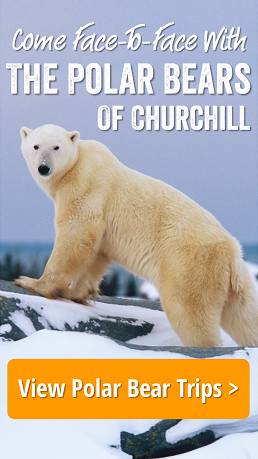by Steve Selden | Jan 14, 2015 | Churchill News
The first winter I spent on Cape Cod the Cumberland Farms convenience store ran out of milk in the middle of a two day snowstorm. I was in awe that a store in a developed, though somewhat remote, area could run out of such a basic life staple. Churchill, a very remote location by most standards, had a slightly bigger problem …no gasoline for three days.
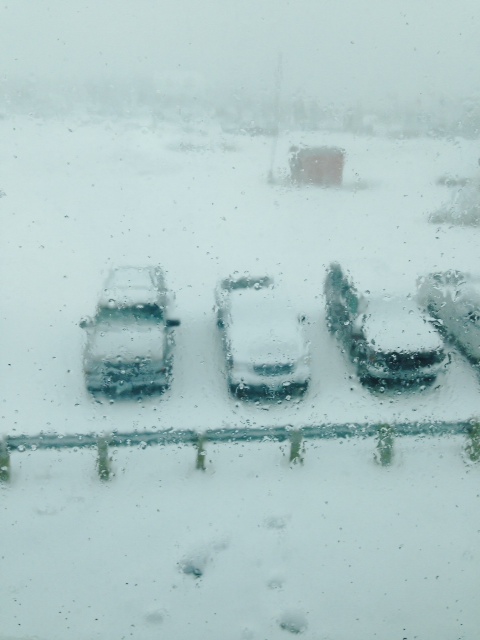
A look outside the Churchill Northern Studies Center. Donna Kelber photo.
Details of the “shortage” are somewhat sketchy. At what was first construed as a gas shortage was later confirmed by Mayor Mike Spence as a “interruption in service” between town and the 50 million liter tank farm which is only seven kilometers outside of town adjacent to the Port of Churchill. Both facilities are owned by Omnitrax company out of Denver, CO.
Taxi’s were forced to shut down and town vehicles were being garaged and saved for only emergency usage. The town’s only gas station remained closed for the three days.
Petrol service has since been restored and Mayor Spence has vowed that the issue won’t arise again. He and the town are working with Omnitrax to insure service workers will be available to transport fuel from the storage tanks to the gas station.

Port of Churchill with four fuel tanks in the background.
In a location where weather conditions are extreme on a fairly regular basis, the inability to travel across town to the grocery store, work or hospital becomes vital. Even though Churchill is tiny compared to other towns in the world, the winter conditions make a short 10 minute walk across town feel like traveling cross-country.
Keeping out of the political side of this mishap, it serves as an example of how precious fuel resources in the world are and how we all should treat them as such. Most of us do not think twice about being able to drive five minutes and fill our car’s gas tank. If we all had to experience life without fuel for three days it might serve as an excellent reminder of how valuable these resources are. Maybe reassessing trips we all make in our automobiles should be a goal for this year ahead.
by Steve Selden | Jan 13, 2015 | Conservation
Narwhals are one of the rarest and most unique whales on the planet Earth. They are also vastly mysterious and tend to capture the imaginations of many people, especially those fascinated with the Arctic. The distinct spiraled tusk or tooth that protrudes from the whales upper jaw lends to their enduring mythology. The tusk can grow up to 10 feet and some Narwhals will even sprout two tusks. These animals can weigh up to 4,200 pounds and grow to 17 feet in length. The photo below by Paul Nicklen for National Geographic and World Wildlife Fund provides a great look at the Narwhal’s tooth.

Narwhal with spiral tooth rising from the Arctic water. Paul Nicklen photo for National Geographic and World Wildlife Fund.
The Narwhal population is currently at more than 80,000 worldwide. The majority are found in Atlantic and Russian Arctic sea waters. Smaller populations dwell in Greenland and Norwegian waters. In summer they migrate in pods of 10-100 whales closer to shorelines and in winter they swim farther out to sea and live under sea ice, surfacing in open leads of water. Their preference is to stay at the surface but Narwhals can dive up to 5,000 feet. They feed wherever they can find krill, fish or squid in the cold northern waters.
Narwhals communicate through various trills, clicks and squeals. Males will often cross tusks in behavior known as “tusking“. Scientists are researching this behavior trying to distinguish whether it’s another form of communication, sexual display or friendly contact. Females become pregnant between March and May and have a gestation period of up to 16 months giving birth to a single calf. Calving every three years, females will nurse for a year or more.
The environmental conditions in which narwhals exist are truly awesome in that they require uncanny survival traits. Existing in the extreme cold and icy regions takes a unique genetic make-up. Narwhals are also being threatened by increasing oil and gas exploration in their native waters. All this exploration leads to more ocean shipping traffic as well. These factors cause noise pollution in the dark ocean waters where narwhals and other marine mammals rely on quietness to communicate with each other and locate food sources. This relatively new and growing threat could lead to dire consequences for many species. For more information check out this World Wildlife Fund site. This WWF initiative helps raise awareness of the noise pollution affects and address the threats to Narwhals and other whales and marine mammals.
by Steve Selden | Jan 12, 2015 | Churchill Photography
Polar bears get all the press in Churchill, Manitoba. They are why most travelers head north to the Hudson Bay shoreline… hoping to see the “king of the Arctic”. Another animal is quite prevalent in the area and they inhabit the town year-round.
Sled dogs of different breeds are scattered all across the tundra on the outskirts of town. Mushers locate them in groups of 10-50 in designated areas on crown land leased for that purpose. With the increasing popularity of dog-sledding from a tourism standpoint as well as the increase in passion for professional endurance races such as the Hudson Bay Quest, the iconic “husky” sled dog has become an animal attraction for those wanting to get the full flavor of the Arctic.
Enjoy these fantastic photographs from Churchill…the new “sled dog” capitol of the north!

Hudson Bay Quest race start 2014 in Churchill, MB. Brad Josephs photo.

Canadian Eskimo sled dog outside Arctic Trading Company in Churchill. Karen Walker photo.

Sled dog team waiting for the signal in Churchill.
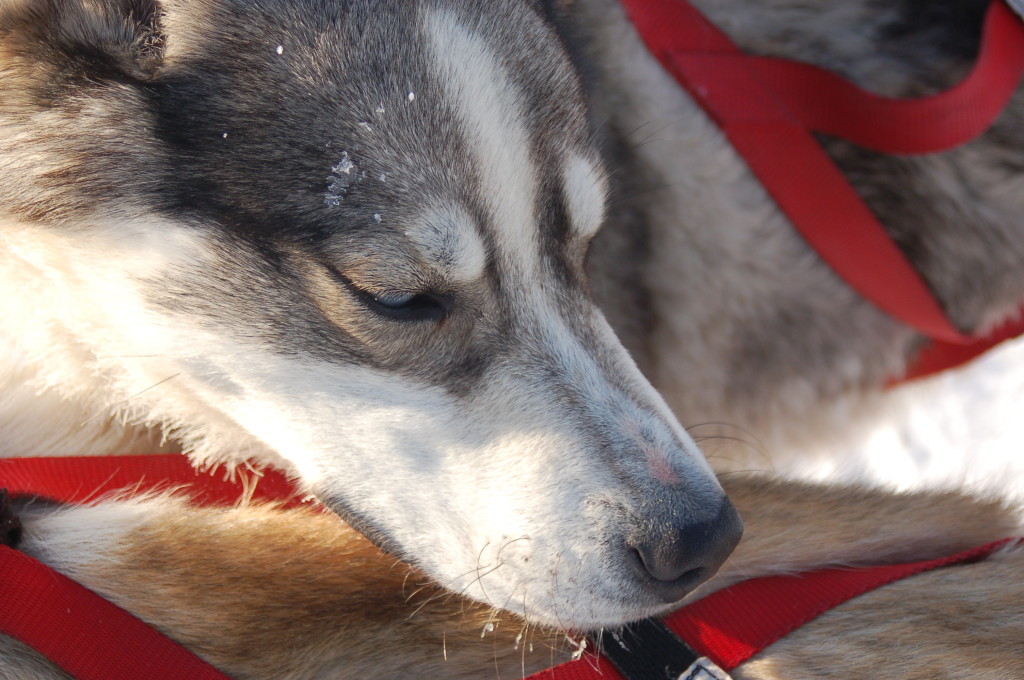
Sled dog taking a quick rest between runs in Churchill.

Churchill musher Charlie Lundie and his dog team. Steve Selden photo.
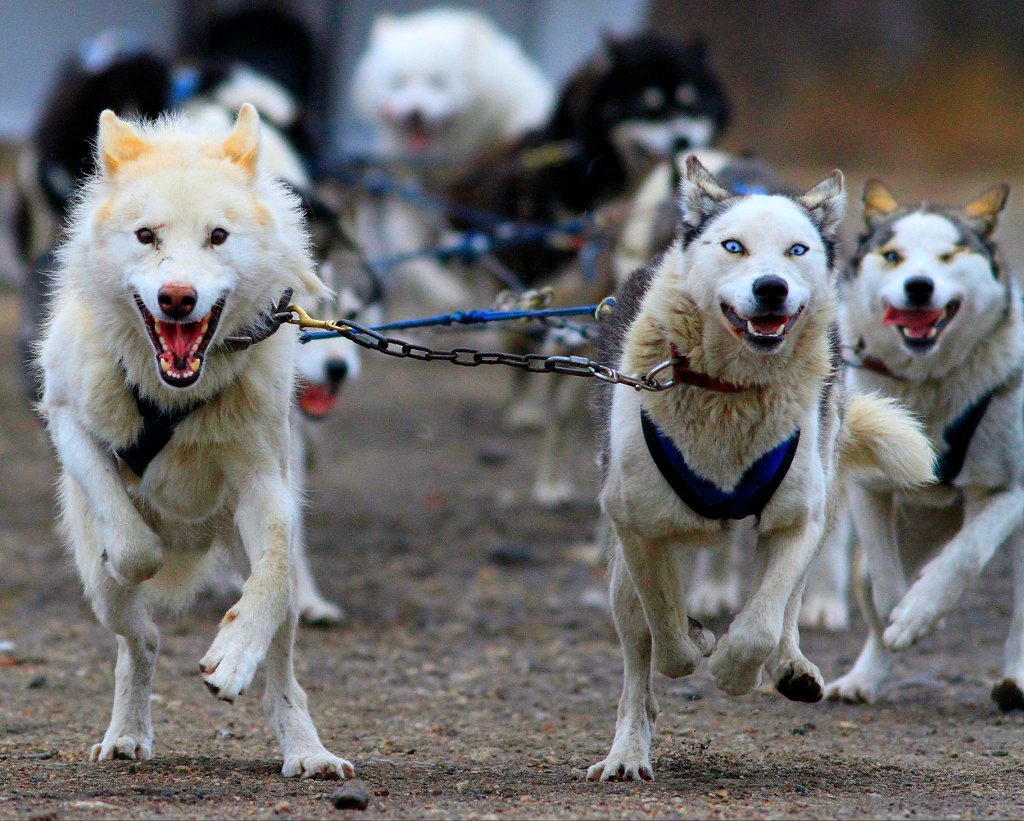
Churchill sled dogs going for the gold. Brad Josephs photo.
Come to Churchill for a sled dog excursion with Natural Habitat Adventures! visit nathab.com for more information on these incredible experiences.
by Steve Selden | Jan 11, 2015 | Churchill News
A pingo is a mound of earth-covered ice found in the Arctic and sub Arctic reaching up to 70 meters high and up to 900 meters in diameter. A pingo is a periglacial land form, or a form of patterned ground that is a characteristic of colder climates such as the Arctic or sub-Arctic. The term originates from the Inuvialuktun word for a small hill.
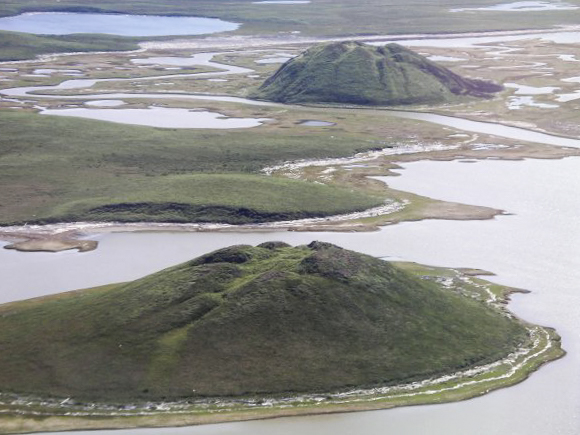
Periglacial is a term used to characterize an environment located on the margin of former glacially active territory. Most of these regions now have layers of permafrost beneath the the top layer of soil. However, freeze and thaw cycles can influence landscapes outside areas of past glaciation. Periglacial environments are regions where freezing and thawing alter the landscape significantly.

Pingo locations in the Canadian Arctic.
They are essentially formed by ground ice which forms during the winter when temperatures dip below the freezing point. When ground water seeps into cracks in the ground it freezes and creates “lenses” of ice which slowly increase in mass as more and more water trickles in. As they grow larger in sizes, the ground above rises from the source forcing the ground to form huge domes. Pingos can be 50-metres high and 900-metres wide. In some, the ice lens has melted and the dome has collapsed into a volcano-shaped hill.plural form is “pingos”.

by Steve Selden | Jan 10, 2015 | Churchill Photography
This is one of my favorite polar bear photos from Churchill, Manitoba. Hopefully, most polar bears are enjoying a bountiful hunting season out on the Hudson Bay pack ice.
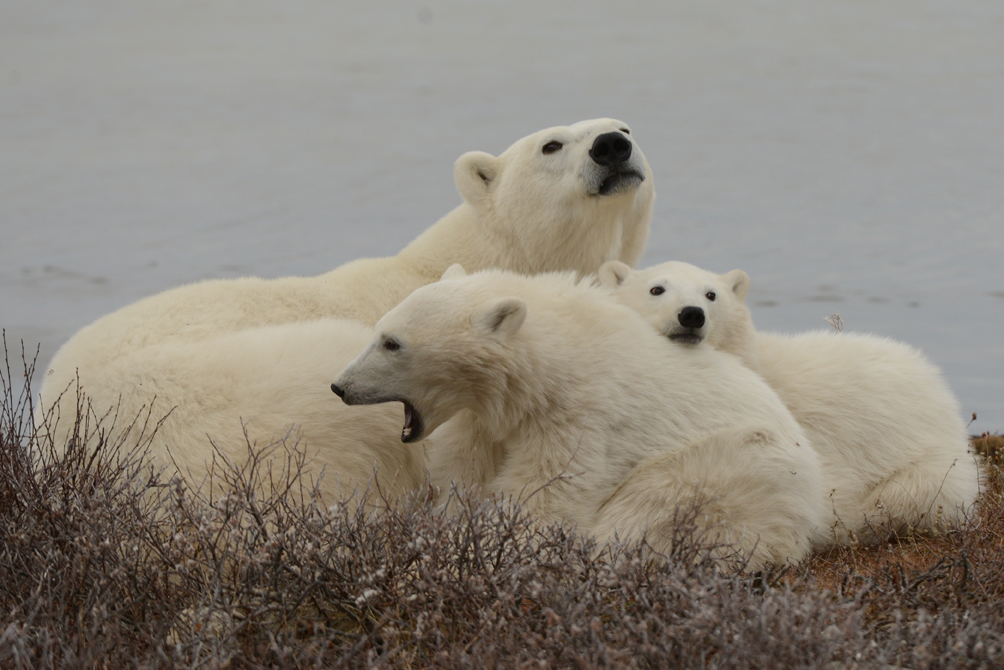
Polar bear cubs with mother by the coast of Hudson Bay. Kurt Johnson photo.














